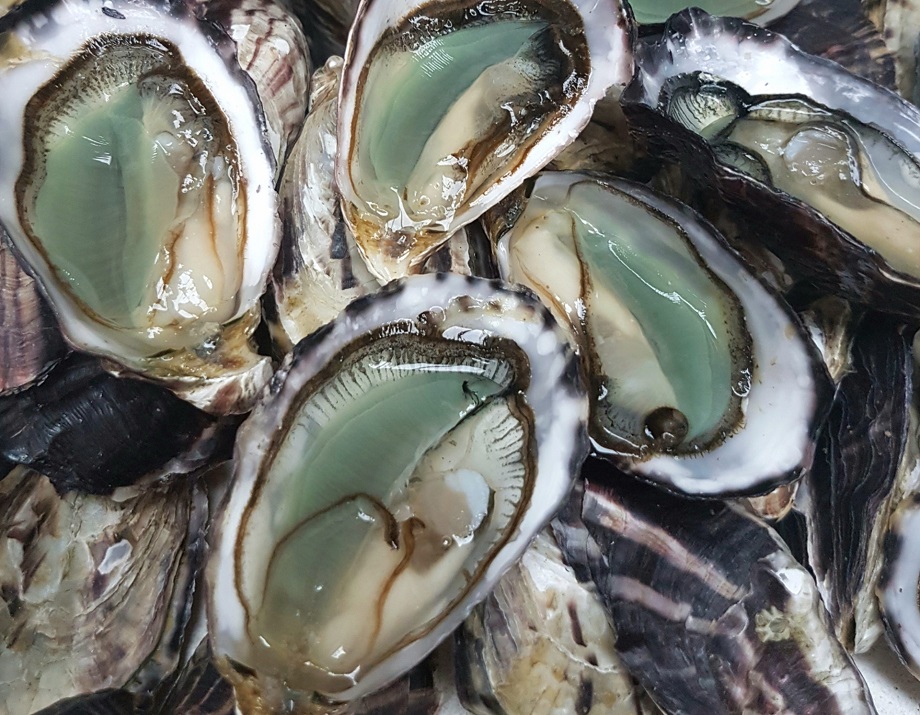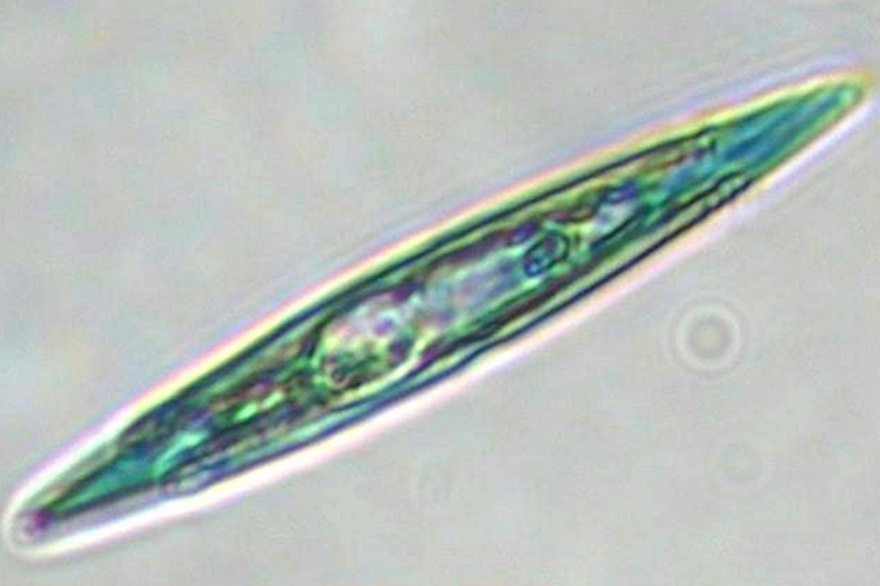
For centuries French food connoisseurs have celebrated “fine de claires vertes” oysters from the Marennes-Oléron region on the French Atlantic coast.
These oysters are conditioned in knee-deep rectangular salt ponds, called ‘claires’, for at least one month to fatten and take on a sweeter, fruitier flavor from the unique microalgae inhabiting these ponds.
One such species of microalgae is the diatom Haslea ostrearia that produces an unusual blue pigment, called marennine, name after the region where it was first found.
This pigment stains the oyster gills an extraordinary shade of turquoise blue-green (pictured, above. Photo: Sarah Ugalde).
Sometimes dubbed ‘emerald oysters’, they were favoured by French royalty as early as the 1700s, and in France the farmers get twice as much for their coloured oysters as for their regular stock.
 While emerald oysters have occasionally been seen in Australia, such as Coffin Bay in South Australia (2012), Moreton Bay in Queensland (2003) and Merimbula in New South Wales (2017), oyster farmers have been mostly unaware of what caused the coloration and markets often rejected stocks.
While emerald oysters have occasionally been seen in Australia, such as Coffin Bay in South Australia (2012), Moreton Bay in Queensland (2003) and Merimbula in New South Wales (2017), oyster farmers have been mostly unaware of what caused the coloration and markets often rejected stocks.
In Tasmania, the blue diatom has been known since 1995, but has recently become more common in Pipe Clay Lagoon in October-November 2017 and especially November-December 2018 (pictured, left. Photo: Gustaaf Hallegraeff).
The blue pigment is harmless to humans but may have benefits to the oyster and have antioxidant, antibacterial and antiviral properties.
Professor Jean-Luc Mouget from the University of Le Mans in France received a $2.5M European Union research fund to better understand this phenomenon (GHaNA/H2020-MSCA-RISE-2016) and IMAS is partnering in this biotechnology effort.
The research is exploring whether Tasmanian blue oysters may be better able to cope with environmental stressors such as heat waves, Pacific Oyster Mortality Syndrome (POMS), and vibrio outbreaks, and if the unique health benefits are passed to humans after consumption.
Oyster farmers are encouraged to work with restaurants and distributors to capitalise on the market and branding opportunity offered by Australian emerald oysters.
A dish fit for royalty!